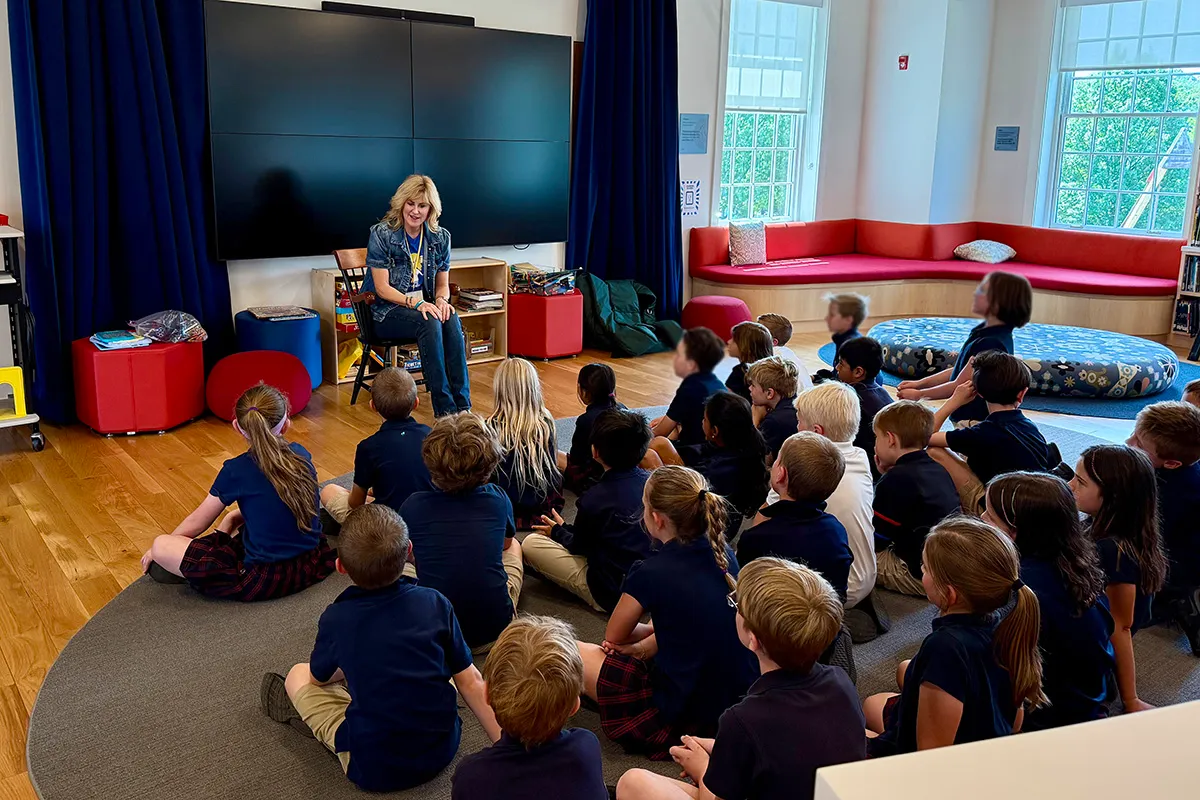By Nupur Bagoria
Listening is a fundamental skill that often gets overlooked. With phones, tablets, and other distractions everywhere, along with the regular hustle and bustle of busy classrooms, it’s hard to know what good listening really looks like. Teachers spend time teaching students to read, write, and solve math problems, but it’s just as important to teach them how to sit and pay proper attention.
In our conversation with educator, author, and keynote speaker Christine Miles, we explore the often-invisible crisis of listening in education. Her expertise illuminates both the challenges and the path forward for educators seeking to create more engaged, attentive learning environments.
Miles has made it her mission to bridge this critical gap, which is why she created The Listening Path®, a revolutionary system designed to teach listening as a foundational skill. Through her innovative tools and evidence-based approach, Miles helps both teachers and students develop the listening skills that are essential not just for academic success, but for meaningful communication throughout life.
Q: From your experience, why do you think listening has become such a critical challenge in today’s classrooms?
Listening is a true 21st-century skill, central to what education strives to accomplish. It’s at the core of the “4 C’s” that drive student success: critical thinking, communication, collaboration, and creativity. Yet listening is rarely taught with intention. We often assume it happens automatically, but the truth is that most adults and children, including teachers, have never received formal instruction on how to truly listen and understand.
Despite its formative importance, the numbers are startling: less than 2% of people have been formally taught to listen, yet 96% believe they’re “good listeners.” This leaves educators with a real dilemma. How do you teach a skill you’ve never learned yourself? As a result, listening strategies in classrooms are typically limited to performative behaviors like making eye contact or sitting quietly, instead of practices that develop genuine understanding.
Today’s classrooms are filled with distractions, and many students feel they are truly able to listen in ways that help them learn. When teaching intentional listening is absent, students mentally check out, miss directions, and struggle to connect with their teachers and classmates. Listening isn’t just about hearing words, it’s the bedrock of real understanding, focus, learning, and meaningful relationships.
Q: How did we end up with this disconnect? Do smartphones and social media play a role?
This gap isn’t new; it’s rooted in how we’ve approached listening for generations, treating it as a passive skill that should just “happen” naturally. In truth, our brains are wired to wander, and developing genuine listening skills has always been difficult.
Today, the challenge is even greater—97% of students own smartphones, and nearly all of them bring their phones to class, making distractions unavoidable. Screens and social media intensify the problem by shortening attention spans and pulling us away from meaningful interactions, both within and beyond the classroom.
That’s why we need to intentionally teach and practice listening skills, so we can address long-standing challenges and new distractions alike, and finally learn how to listen with understanding and purpose.
Q: Your award-winning book What Is it Costing You Not to Listen? explores the real price of poor listening skills. Can you share some of the most surprising or significant “costs” you uncovered through your research––both for students academically and for teachers professionally?
The biggest costs of poor listening skills are often invisible, hiding in plain sight. It is incredibly difficult to address a problem you aren’t even aware of, and that’s exactly where poor listening does its damage.
A major part of learning depends on attentive listening. When students aren’t fully engaged, the consequences ripple through every aspect of their education: missed instructions, misunderstood assignments, and a loss of valuable opportunities to build empathy, collaborative skills, and social intelligence with their peers. For teachers, the impact means more time spent re-explaining information, increased effort to maintain engagement, and fewer moments for those rewarding connections that make teaching so meaningful.
But this problem doesn’t stop at the classroom door. It extends into the workplace, where 70% of mistakes are due to ineffective listening, while reducing productivity and morale, and even fueling organizational conflict and turnover. In personal and professional relationships, poor listening erodes trust, diminishes creativity, and weakens teamwork. The hidden costs are real: lost learning, wasted time, unfulfilled potential, and a weaker sense of community.
Q: What are your most effective strategies for establishing what you might call a “listening culture” in the classroom? Are there specific techniques that teachers can implement immediately?
The most effective strategies for building a listening culture in schools start with making listening a visible and intentional part of everyday life. In my experience, classrooms thrive when listening isn’t treated as a background expectation, but rather is woven into the core curriculum and practiced daily.
I encourage educators to teach simple and practical listening tools, establishing a shared language that everyone uses together, both in school and at home. Reflection is key: make space for students to talk about not just what they know, but how they feel and what perspectives they bring. It’s just as important to celebrate listening as it is to celebrate speaking, so recognize when students make others feel heard and understood.

Finally, partnering with parents is essential. When teachers share classroom listening strategies and families use them during meals, bedtime, or family gatherings, listening becomes a shared value. These small steps, done together, can make it second nature and help a real listening culture grow.
Q: Parents often feel they’re competing with screens and constant distractions for their child’s attention. Based on the strategies in your book, what practical steps can they take at home to reinforce good listening habits?
Listening isn’t just for school, it’s a family skill, too. I always recommend setting aside some device-free time for conversations. Modeling good listening means showing real curiosity about your child’s world, and encouraging them to be curious about yours. Ask questions that invite your child to share more, and listen for the feelings behind their words—this shows them how much you value what they have to say.
While childhood is naturally self-centered, it’s still important to teach kids that being interested in others helps them learn to navigate life and stand out wherever they go. Have your child practice repeating back what they heard with family, and thank them for opening-up; these small acts nurture empathy and confidence. Even playing games or telling your own stories creates moments of connection, helping children realize that listening is about discovering and honoring each other’s experiences.
Q: Is there anything else about the listening crisis or solutions you’ve developed that you feel is important for teachers to understand as they progress through the school year?
The greatest takeaway is this: listening is a skill, and it can be learned at any age. We need to treat it as an active practice, just like reading or math. The Listening Path® is a solution that completely shifts classroom listening from basic performative behaviors—like making eye contact and staying quiet—to a structured, common language that’s fun and easily integrated into any classroom, home, or school setting.
One of the biggest gaps in the system is that most teachers have never been formally trained in listening skills themselves, so it’s nearly impossible to teach what they’ve never learned. The Listening Path® is designed specifically to close that gap. It’s easy for teachers to implement in the classroom without professional development or specialized training.
With this resource, teachers become facilitators, leading their students through engaging practice and exploration of these new tools, rather than shouldering the overwhelming responsibility of inventing or mastering a new curriculum. Teachers’ days are challenging enough; this tool helps them get back to what they do best: connecting with students, fostering learning, and helping every child thrive.
About Christine Miles
Christine Miles, MSEd, is a global pioneer in listening intelligence. She is an award-winning author, keynote speaker, and founder of The Listening Path®, a revolutionary system transforming how the world listens and connects. Christine empowers leaders, educators, students, and changemakers to turn listening into their greatest strategic advantage, helping them shift from miscommunication to meaningful impact, so they can build cultures of empathy, drive success, and spark lasting change.


